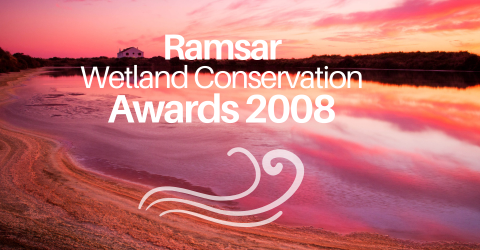
Award for Science 2008
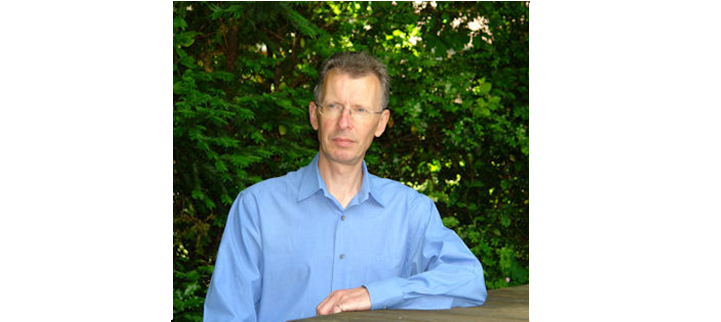
David Pritchard
Mr Pritchard is being given the Award for the unique way in which he has supported the development and implementation of the Convention on Wetlands for two decades, with exceptional dedication, consistency, and effectiveness, as a representative of BirdLife International at the Convention's meetings, but also contributing very extensively of his own time. He has provided outstanding advice and support to many Convention meetings (COPs, Standing Committee and STRP meetings) since 1990. He has also made major contributions to the work of the STRP, notably on maintenance of ecological character, Ramsar Site selection criteria, impact assessment, and wetland cultural values, and has led the development of ecological indicators of the effectiveness of the Convention – an approach now also used by other MEAs. Mr Pritchard has participated in several advisory missions on behalf of the Convention and has worked with several small island states in the Caribbean, supporting development of the Convention’s implementation. He has also actively promoted implementation in the UK, notably through participation in the National Ramsar Committee.
Interview with Dave Pritchard
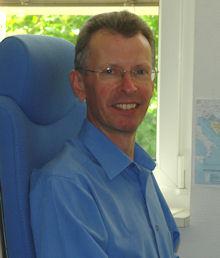
Could you say something about your background? Where did your interest in wetlands stem from? and when did you become involved with wetlands? in what ways?
Well, some people know me mainly for my passion for mountains and forests! But I grew up on the rocky coast of north-east England, and birdwatching, kayaking and photographing the tides brought me close to the rhythms of shoreline environments. Later on, research projects on a bog in the arctic, a lake in the Himalayas and an estuary in Northern Ireland started a long association with wetland conservation. In other places too, though, I was always conscious of the fundamental role of water in the landscape.
When I became a professional conservationist and had various roles dealing with science, legislation and policy, I developed an interest and involvement in the Convention primarily because it was such an interesting model of a useful Convention – and not specifically because it was about wetlands! But the fascination and critical importance of these ecosystems is inescapable, whatever you happen to be dealing with.
We - in the Convention on Wetlands' family – have known you since the Montreux Conference in 1990 – what was your job at that time, and how did it develop to allow you to participate so much in the Convention’s life and evolution?
At that time, I was Manager of the Planning & Local Government Unit in the Royal Society for the Protection of Birds (the BirdLife Partner in the UK). I had previously provided briefing from the UK for negotiations at the Regina conference in 1987, and must have persuaded someone to send me to Montreux so that I could defend my arguments in person! In 1985 I had joined the UK National Ramsar Committee, and never missed a meeting until I left it 12 years later; so that was another basis for attending the global conferences (in fact I contributed reviews of the national committee system to COPs 5 and 6).
My next job was Head of Site Protection and Wetlands Policy at the RSPB, and then in 1999 I became Treaties Adviser in the International Division, dealing with European Union law and a range of Conventions at European and global level, including those on biodiversity, migratory species, European wildlife, world heritage, the various Bonn Convention Agreements (three of which I helped to draft and negotiate), and of course the Convention on Wetlands. In 1993, BirdLife International (one of the Convention’s International Partner Organizations) was formed as an evolution from the International Council for Bird Preservation, and I was one of a few individuals appointed to lead and coordinate global work on key Conventions while still working in a national BirdLife organization (in my case, the RSPB).
Other job responsibilities in protected areas policy, environmental impact assessment and site defence casework all had relevance to various parts of the Convention’s agenda, and I ended up (perhaps rashly!) volunteering all sorts of policy, technical and legal inputs to COPs, Advisory Missions, and other parts of the Covention's process, including especially the Scientific & Technical Review Panel (STRP), on which I’ve served since 1999.
In recent years, in addition to leading on the Convention's work for BirdLife, I was fortunate to be able to spend a number of short periods working with the Secretariat of the Convention in Gland on secondment from the RSPB, helping with the development of scientific and technical matters.

You became very involved in the Convention on Wetlands – can you say more about this, and about the Convention’s importance and impact?
My job at the RSPB allowed me to make a particular contribution. But beyond that, I seem to have spent a lot of my own time, in holidays and other “free moments” (!) on projects and other involvements to keep things moving forward. This has included initiatives to secure new Contracting Parties and the inclusion of some UK Overseas Territories in the UK’s ratification of the Convention, assisting with site designations, conducting a national case study of implementation of the Convention in the Caribbean, reviewing the national committee system, assisting with capacity-building in several countries, reviewing the systems used by different Conventions for site defence responses, reviewing cooperation between the Convention and UNESCO (while on a placement at UNESCO HQ), presenting papers at numerous conferences, representing the Convention in other fora, serving on the Ramsar Culture Working Group, and even (linking with my “other life” in the arts sector), acting as a jury-member in a Convention-sponsored film festival!
I mentioned earlier that I’d always seen the Convention on Wetlands as an especially interesting model of an international conservation cooperation framework. Dealing as I did for a number of years with several different Conventions allowed me to make comparisons, and to get involved in the various global initiatives on synergy and harmonization between multilateral environmental agreements (MEAs). This is really important if we’re to secure the political support that’s necessary, and not to be criticized as being disorganized or duplicatory (even though the same governments who might say that are the ones who adopted all these instruments in the first place!). I believe each of these MEAs exists for a distinct reason and has an important job to do. I also believe that the Convention sets a very smart and experienced standard for how things can be done in an effective way; and that it has an important leadership role to contribute to the whole process of global environmental governance.
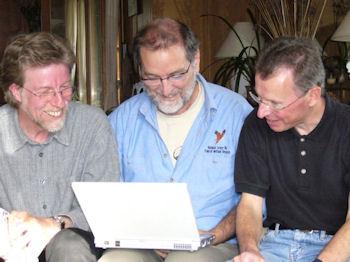
You have contributed a great deal to the Convention’s technical and policy guidance, and you have also participated in the Convention on Wetlands' missions on the ground. Could you expand on these two aspects of your wetland and the Convention-related work?
I always start from the basic provisions of the Convention text. This is not a mere formality - it is the fundamental solemn expression of aspirations and commitments by most of the world’s sovereign states. It’s also an underappreciated storehouse of vision and possibility, and we’re still refining some of the nuances, filling some of the conceptual gaps, and elaborating agreed explanations of its implications for an ever-expanding variety of real-life implementation scenarios. I’ve been especially interested in helping to design some of the recent integrated frameworks of guidance that show how all the elements fit together and work as a system, while at the same time “troubleshooting” occasional specific interpretation dilemmas that arise.
I have seen special importance in the Articles concerning the agreed way of dealing with specific threats to important wetland areas. This is the litmus-test of the whole Convention – if countries don’t understand in a consistent way or don’t honour these provisions, then there’s not much hope for the more all-embracing objectives of wise use and sustainable development. That’s why I’ve worked so hard on guidance on environmental assessment, threat response options, tests of the national interest, legal parameters for site boundary changes, indicators of effectiveness, and so on. It’s also why I’ve always stood ready to participate in Ramsar Advisory Missions at individual sites, in instances where I have any relevant expertise to contribute.
At the same time, these very practical things can fall apart if we don’t have a solid understanding of the principles and values on which the whole system is based. If we’re challenged on the validity and the coherence of those values, we need to be able to respond with a totally robust and well-understood rationale. Ecological science in my view is sometimes confused about this, and I am very committed to promoting clear debate and elaboration of a transparent appreciation of the full value-set that’s at stake. That’s why I’ve put effort into the international importance criteria, the ecological character concept, the concept of coherent site networks, notions of “naturalness”, and the debate about cultural values.
The range of your interests is very broad, and your knowledge of the Convention is proverbial. What perspective does this give you of the treaty and its evolution, now and onwards?
The Convention on Wetlands was drafted in the 1960s essentially by a group of eminent bird conservationists. Nowadays our concern and understanding about environmental issues touches on an ever-wider range of issues, and it has to, if we want seriously to engage government policy, and to be funded, and to find solutions to the underlying causes and ultimate drivers of change.
There is a danger here of playing to short-term fashions and populist bandwagons. The idea that ecologists should feel that they have to convert themselves into something more like development economists in order to be credible is problematic. But it was always true that ecosystem integrity, human livelihoods, and socioeconomic and cultural dimensions of our position in the natural world are all interconnected. In fact the Convention's text has always reflected this, but the Convention also keeps pace with the times by intelligently positioning itself in global debates on ecosystem services, millennium development goals, intangible cultural values, trade footprints and so on, and it’s mapping out in a measured and targeted way its relevance to other sectors like agriculture and human health.
The key “other sector” of course is water resources. There is no global treaty on water. The Convention isn’t constituted to be one, but there is a really important job for it to do in helping to shape responses to the global freshwater crisis and related aspects of climate change. It does nonetheless have its own primary mission to deliver, and in contributing to these other questions it must remain true to that mission, of championing the crucial importance of wetland ecosystems.
Some Conventions have high political profile, and access to significant resources. The Convention’s strengths instead lie mainly in some superbly far-reaching provisions in the treaty’s original text, and in the depth of experience and technical know-how contained in its people-networks. Partnering this legal regime and scientific strength with other bodies, who can bring greater political and financial muscle to global wetland priorities, makes for a powerful combination, and that’s why it’s so important to get this right.
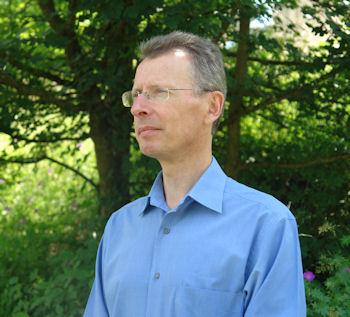
How do you react to receiving the Ramsar Award? and what about the future?
I am absolutely delighted to receive the Award. It means a lot to me on a personal level to have such a tribute from a community of people (the “Ramsar family”, to quote your earlier question!) who are so close to my heart, and whose opinions I deeply respect. I warmly thank them all. I see this also as a tribute to BirdLife International, whom I’ve been proud to represent for so many years.
I take this Award also as an endorsement of the importance of continually striving to make the Convention’s technical systems and thinking as fit for purpose as possible, its conceptual and policy “architecture” as coherent as possible, its governance as accountable as possible, its values as explicit as possible, and its conservation impact on the ground as effective as possible. We are all partners in that effort: long may it continue!
This year I left the RSPB after more than 26 years’ service, and am now working freelance, in a way that will allow me to combine a special mix of interests in interrelated areas of the creative arts, cultural heritage, conservation science and international environmental policy. But I have definitely not left the Ramsar family; and I expect to be active in the Convention at all levels for many years to come!
Do you have any general message about the importance of wise use of wetlands in the present and coming world?
Wise use is not just a theory. We have defined it in theoretical terms, but its real definition is there to be seen in results: dysfunctional systems are the all-too-obvious result of unwise use.
Wise use is not an optional choice: it is a description of the only sustainable and equitable way to go - in effect, the only environmentally moral way.
Wise use is not necessarily technically difficult. Often we have enough data and enough insight for everyone to know what course of action will move towards a sustainable direction, rather than away from it. We may be pressed for ever-deeper layers of justification, but the real limiting factor will often lie elsewhere - in political will, in funding, or in judgements about tradeoffs. Let’s strive for honesty among ourselves and among everyone else as we grapple with this, so that the results might live up to that vision set out by Ramsar’s founding fathers.
-- interview by Ramsar staff